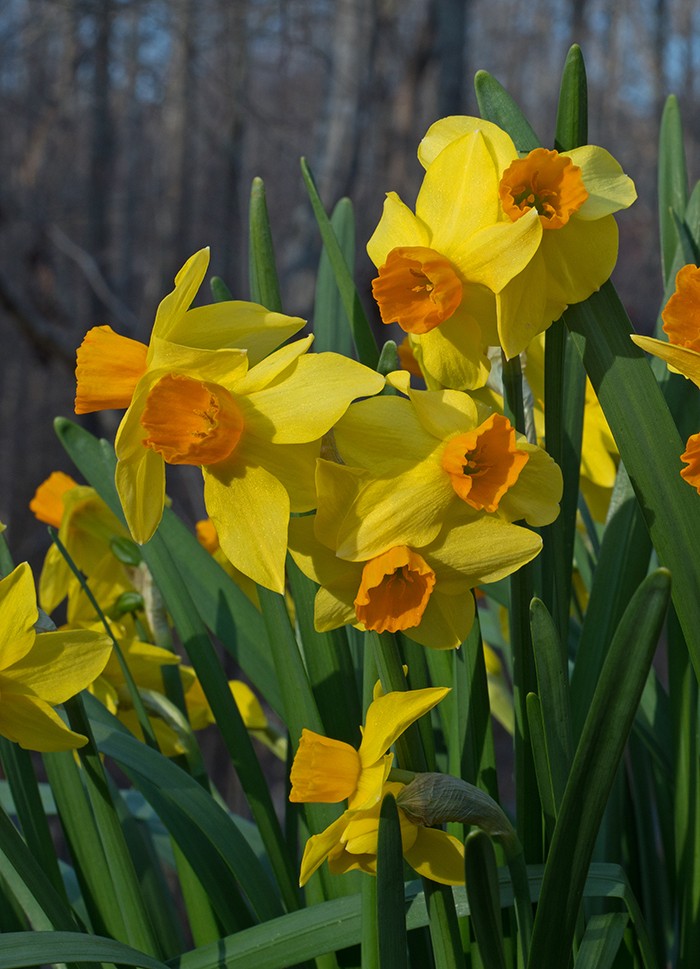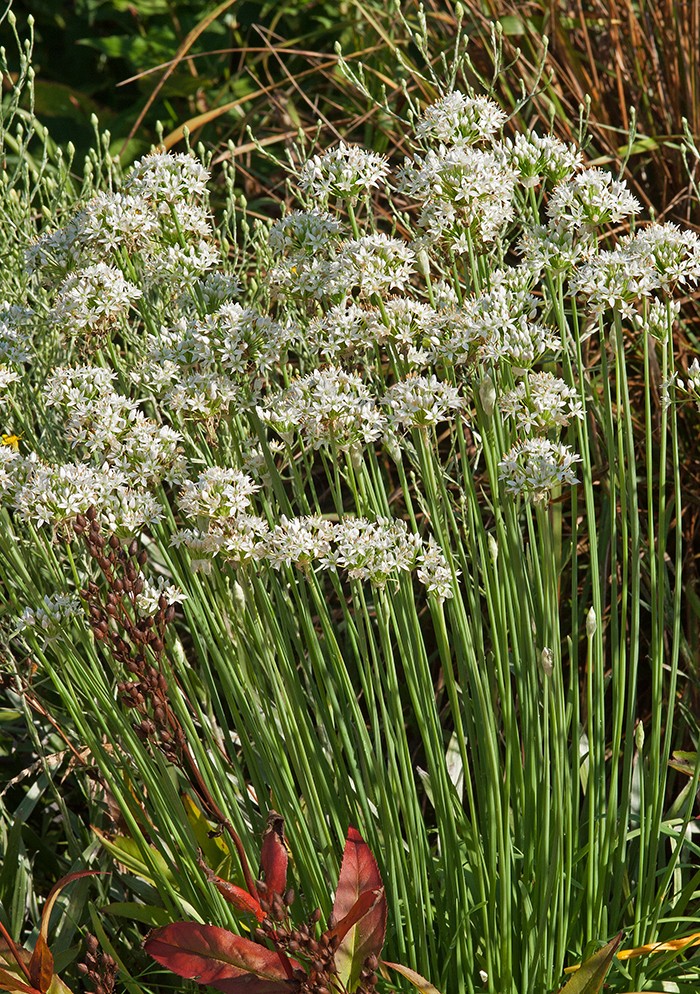I don’t have any problem being a cheapskate gardener. So, when I find a plant that looks great and tastes good — call-it a double-duty delight, if you will — I figure it delivers twice the thrills without twice the price, and chances are good it will come home with me.
Many herbs perform well as such double-duty plants, and one that turns my head is garlic chive (Allium tuberosum). A close cousin to the common chive (Allium schoenoprasm), a cutie sporting pleasing purplish-pink blooms, garlic chives have more spunk in their flower towers, which rise on sturdy stems up to 2 feet or higher over skinny, strap-like leaves and explode into starry white blossom clusters — a display well suited to visually hold its own in any flower bed.
Garlic chives in bloom certainly have the looks to attract your attention, but expect competition from bees and butterflies, who also love the flowers. Not so with Bambi, however, as deer steer clear of this herb.
Garlic chives can be planted in early spring, and they are easily grown from seeds, but for quicker results this growing season, opt instead for transplants, which will be easy to find at local garden shops this time of year.
Whether as an addition to the herb garden or an ornamental bed, garlic chives perform best in loamy, well-draining beds. An ideal planting site is a location that basks in the morning sun but settles into light shade in the afternoon. And since this pretty will suffer in soggy soil, potted plantings are certainly an option.
Although tempting, don’t overharvest the tasty leaves this summer. Their first year in the garden is usually a transition period when these perennials are absorbing energy from the sun to help mature the bulbs, which, after overwintering, will come back the following spring with strong foliage and flower production.
Seeds from the faded summer flowers will easily sprout, creating an ever-enlarging clump. However, to maintain vigorous plants, garlic chives should be divided in the early fall about every three years.
On a culinary note, no, you won’t need to keep a bag of breath mints handy. The tang of garlic chives is mild enough to be used raw in salads, cream cheese spreads or sandwiches. Fresh cut leaves can also be added to soups, stews and Asian dishes, but only add them at the end of cooking so the heat won’t wilt away the delicate flavor of this tasty, double-duty delight.

Snip daffodil flowers after they fade to prevent seed formation.
Daffodils will perform better in the garden if their energy-absorbing leaves are allowed to transition from green to brown before they are pruned to the ground. Also, as the flowers fade, it’s not a bad idea to snip them and their stems off to prevent seed formation, which diverts energy away from the underground bulbs as they are storing up internal oomph for next spring’s flower show. Curious to see what the seeds will produce bloom-wise? Get comfy and settle in for a long wait—it can take seed-grown daffodils five years or more to mature enough to produce flowers.
To Do in the Garden
March
- If you are looking for home-grown veggie munchies to complement your garlic chives at the dinner table, this month is a good time to plant asparagus, cabbage, broccoli, carrots, cauliflower, Swiss chard, collard greens, kale, lettuce, leeks, onions, potatoes, turnips, spinach and radishes.
- With the garden waking up from its winter slumber, it is time to fertilize established shrubs, trees, perennials and roses for better displays this spring and summer. Complete fertilizers such as 8-8-8 and 10-10-10 will do, but in order to stretch out available nutrients over the l-o-o-o-n-g growing season, applying time-release fertilizers is a better way to feed your plants’ needs.
- Sharpening the blade on your lawn mower will have two positive effects: (1) The mower will operate more efficiently, thus useless gas and cause less air pollution; and (2) the blade will cleanly cut rather than tear grass, which leaves ragged ends that can invite diseases to come out and play.
- Wine Down Weekend in Charlottesville
- Pick-Your-Own Staycation
- Go Above & Beyond
- Small Business Spotlight: Triangle Treasure Hunt
- Nonprofit Spotlight: Caring Community Foundation
- Two Sisters Adventure Company
- More Than Science
- Things to Do: March 2022
- Restaurant Profile: Osteria G
- Liquid Assets: Saturday Morning from Raleigh’s Neuse River Brewing & Brasserie
- Garden Adventurer: Double-Duty Delight: Garlic Chives







